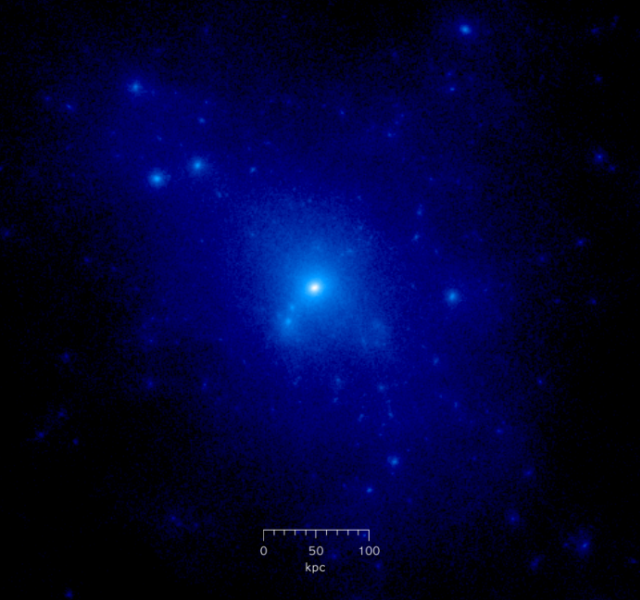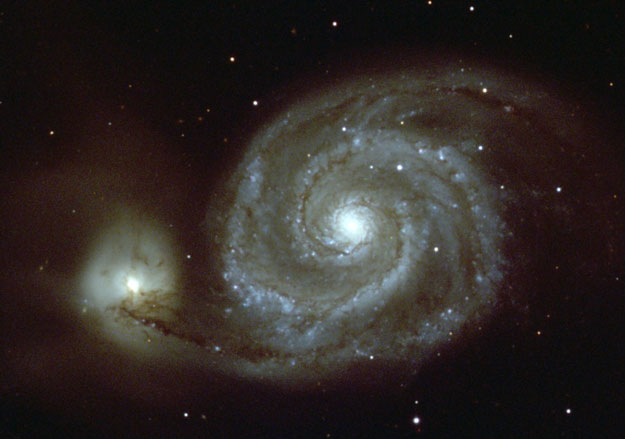A young astrophysicist, Sukanya Chakrabarti, assistant professor of physics at the Charles E. Schmidt College of Science at Florida Atlantic University, has developed a way to discover and map the dark matter halos of distant galaxies, using gravitational ripples caused by the passing of their dim satellite galaxies. She spoke with EarthSky at the January 2012 meeting of the American Astronomical Society in Austin, TX, where she was announcing the results of her research. She told us:

Dark matter is dark because it doesn’t emit any electromagnetic radiation. But it is massive. So that means that it will interact gravitationally with whatever else.
Chakrabarti mapped the ripples in gigantic clouds of gas that surround spiral galaxies. Those ripples, said Chakrabarti, are made by dark matter. She told EarthSky:
The cold gas is a great tracer because it’s very responsive. It’s basically like dropping pebbles into a pond and looking at the ripples in the pond, trying to figure out how massive was the pebble. If you sort of understood the physics of that well enough you might be able to do it, even if you didn’t see the pebble fall in.

Chakrabarti first demonstrated her method of mapping dark matter with the Whirlpool Galaxy, about 23 million light years away. She said:
I think the hunt for dark matter has a lot in common with the hunt for planets, back in the 1800s. There’s a lot of potential to understand dark matter from its gravitational effects on other things. I think that’s a very promising thing, similar in spirit to the way Neptune was discovered. It’s a kind of indirect means of hunting for this thing that we can’t see. And if these kind of methods turn out to be successful, it gives us a way of hunting for dim things, kind of like looking for you car in a fog. If you kind of know approximately where to look, you’re going to do much better than if you have to do a completely blind search.
Chakrabarti’s paper – “A New Probe of the Distribution of Dark Matter in Galaxies” – is published online.
The galaxies we see around us in space have extended gas disks that are very fragile and respond easily to the gravitational pull of passing satellites, Chakrabarti said. She added that the ripples in the outer gas disks of spiral galaxies act like a mirror of the potential depth of the dark matter halo in the primary galaxy.
Thus, even though the dark matter halo cannot be seen directly, scientists can essentially map a galaxy’s dark matter, using this method.
Chakrabarti previously developed a mathematical method called tidal analysis to find unseen satellite galaxies by analyzing the ripples in the hydrogen gas distribution of large spiral galaxies. Many dwarf galaxies are very dim, so it is useful to have a way of finding them that does not rely on their optical light, she said.

Earlier, she applied the method to the nearby Whirlpool Galaxy, which has an optically visible satellite, to infer the mass and location of the satellite. She found these values to be observationally corroborated, thus proving her method.
Listen to the 8-minute and 90-second EarthSky interviews with Sukanya Chakrabarti on mapping the distribution of mass in the unseen dark matter halo of a galaxy, using gravitational ripples caused by passing satellite galaxies (at top of page).











